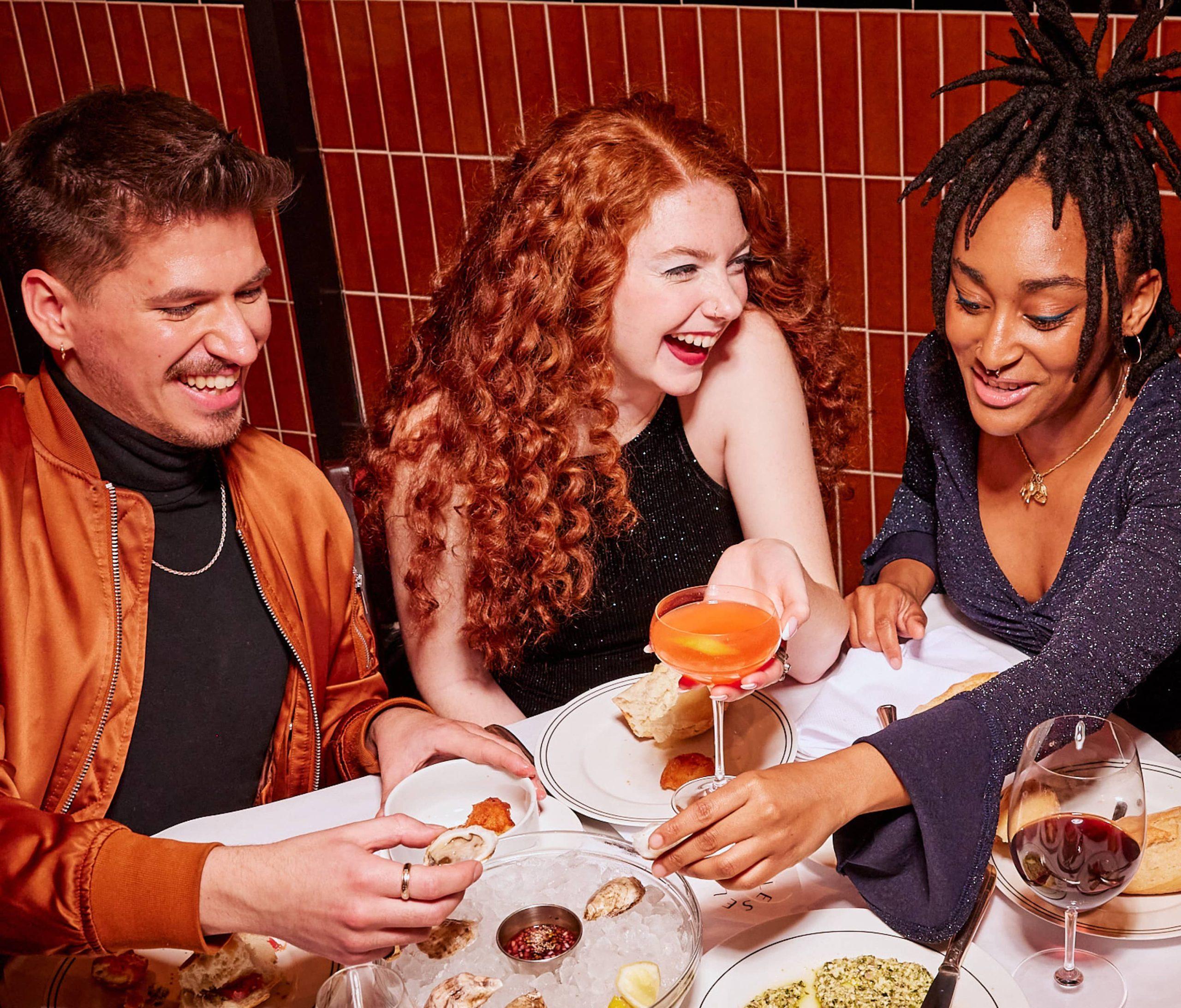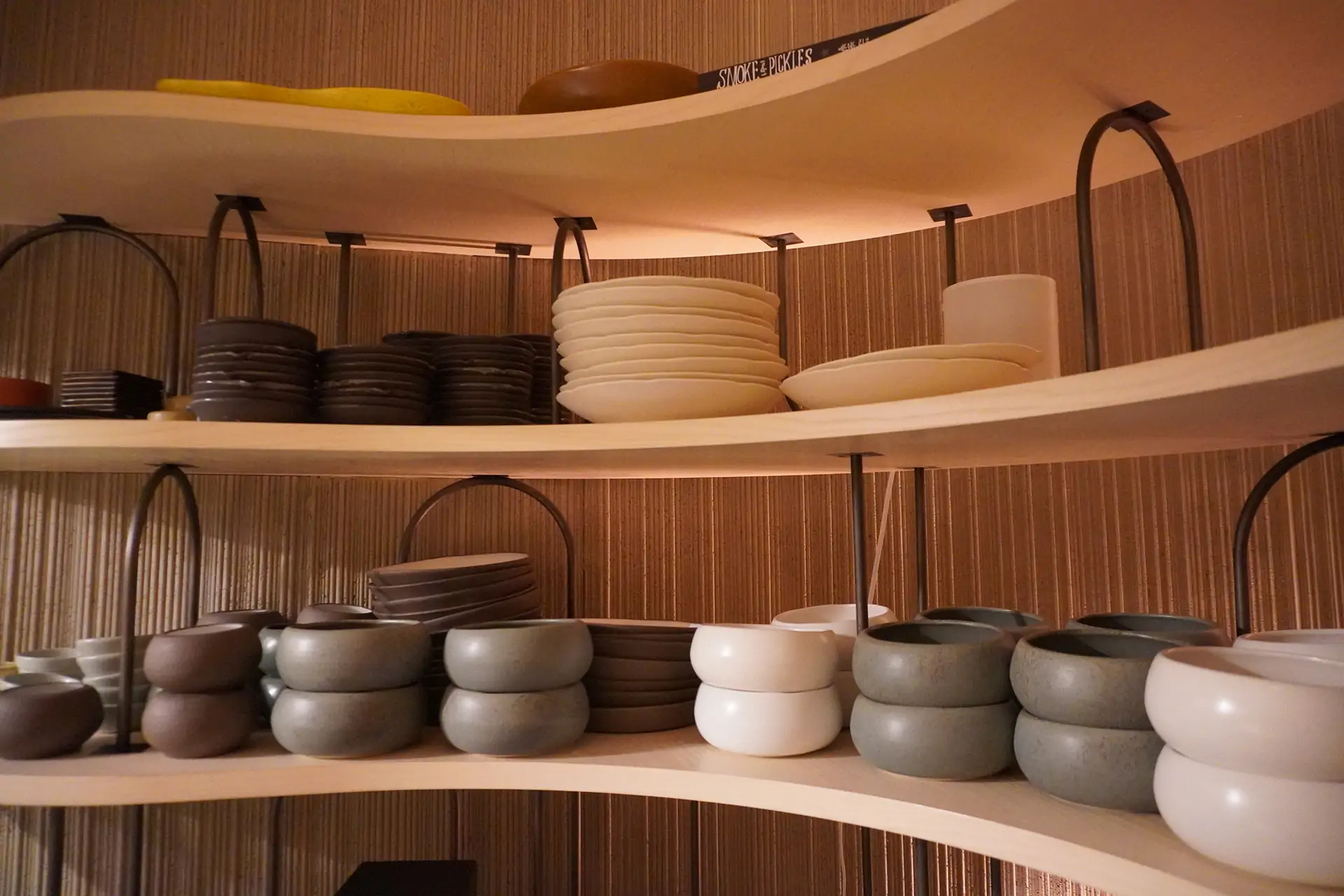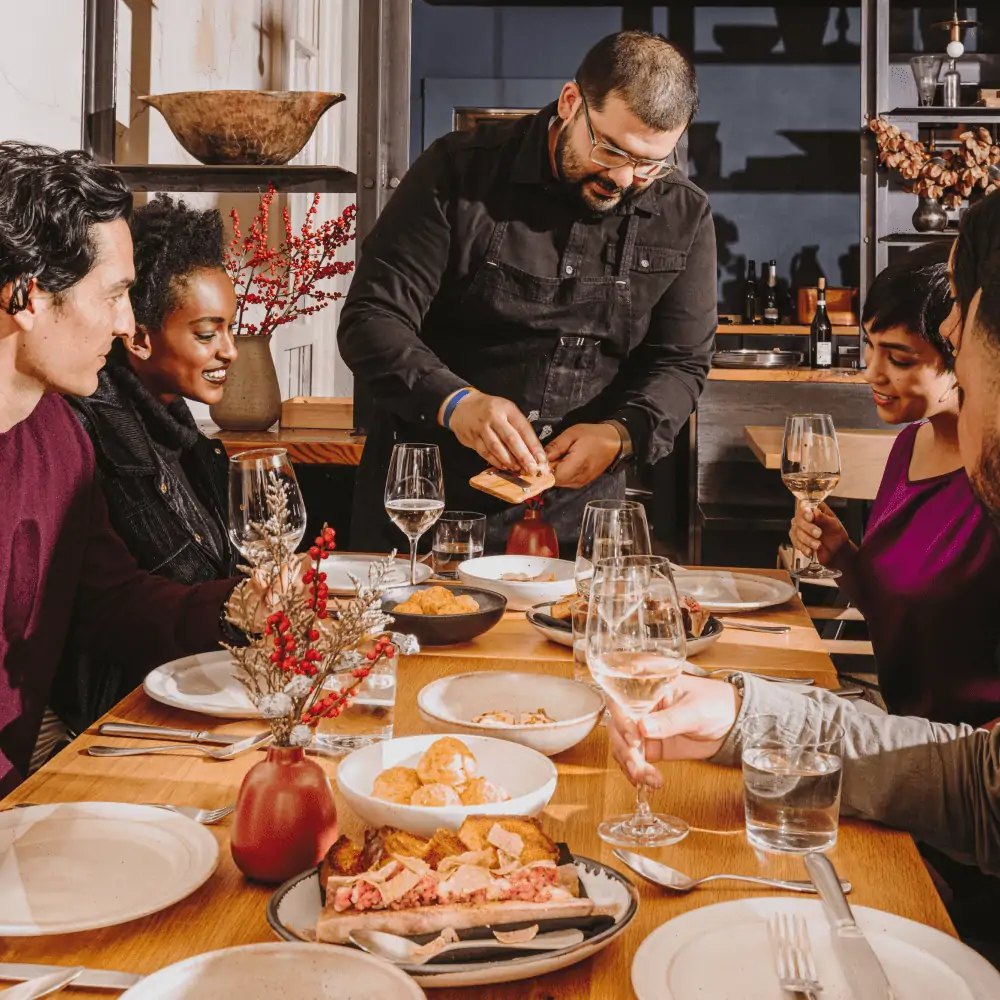What happens when a restaurant decides to eliminate all single- and limited-use plastic completely—from the kitchen to the dining room?
That’s the bold question SHIA, a groundbreaking nonprofit Korean fine dining restaurant in Washington, DC, set out to answer. Since opening in November 2024, they’ve been testing, tweaking, and tracking their journey toward running a more sustainable operation. Now, they’re sharing their preliminary findings—transparently breaking down what’s working, what’s not, and what it really takes to go plastic-free in a real, working kitchen.
As the exclusive research partner, OpenTable is proud to support SHIA’s work—and to help bring these insights to restaurants everywhere.
Why go plastic-free?
For SHIA’s Executive Chef and Owner Edward Lee, the effort to eliminate plastic is about long-term impact. He hopes to inspire the restaurant industry to move towards a greater goal of sustainability—one he believes can only be accomplished when restaurants work together.
“Restaurant people are incredibly flexible, smart, and adaptable,” says Lee. “It is in our DNA—and I think it is time that the restaurant industry becomes part of the solution when it comes to our relationship with our planet.”
The easy wins—and real surprises
At the start of their journey, the SHIA team identified 31 common plastic items—from cling wrap and squeeze bottles to disposable gloves and laminated menus. Since then, they’ve been testing practical alternatives and documenting every swap they’ve made. Some changes have been easier than expected:
“I’ve been trained to use deli or plastic quart containers in every kitchen I’ve ever worked at,” said Lee. “At first it seemed wild not to store items that way, but once we committed, it wasn’t really that hard—and it was really easy to get used to.” Now, the team uses a mix of ceramic, stainless steel, and glass containers to suit different needs, from sauce storage to food prep.
Others took more time—and more money.
“Once you start down this road, it opens your eyes to how ubiquitous plastic is in everything we touch, and how difficult it is to eliminate it,” he says. “Finding affordable solutions for everyday items like brooms, umbrellas, trash bins, and scissors has been challenging.”
Overall, the results from their efforts are already adding up: in just seven months, they’ve prevented approximately 229 kilograms to 351 kilograms (0.23 to over 0.35 metric tons) of plastic waste from entering landfills—a number that continues to grow with each service.
Inside the preliminary findings
SHIA’s preliminary report, created in partnership with OpenTable, is packed with findings and actionable takeaways for restaurants. Whether you’re just starting to think about sustainability or ready to make bigger changes, this report gives you a place to start.
Here’s what’s inside:
- Back-of-house and front-of-house swaps that work
- Cost comparisons for common plastic alternatives
- An estimate of plastic waste they’ve eliminated
- The pros and cons for each change
- A one-page checklist of all 31 item swaps to test in your own kitchen
It’s a playbook in progress, built from real-world experience. “The whole purpose of SHIA is to collect data, do trial and error, and then publish our findings,” says Lee. “We aim to inspire every restaurant to do whatever they feel comfortable with, even if it means only going 15% plastic free. That is how we create momentum—by inviting everyone to join in whatever capacity they can.”
Ready to take the first step toward eliminating plastic?
Download the full report with SHIA’s initial findings to see what worked, what didn’t, and what you can implement at your own restaurant. Whether you’re already cutting plastic or just getting started, there’s inspiration—and practical information—inside.
This is just the beginning. SHIA will continue gathering data throughout the year, and we’ll be sharing a more detailed analysis of their full findings at the end of 2025.




